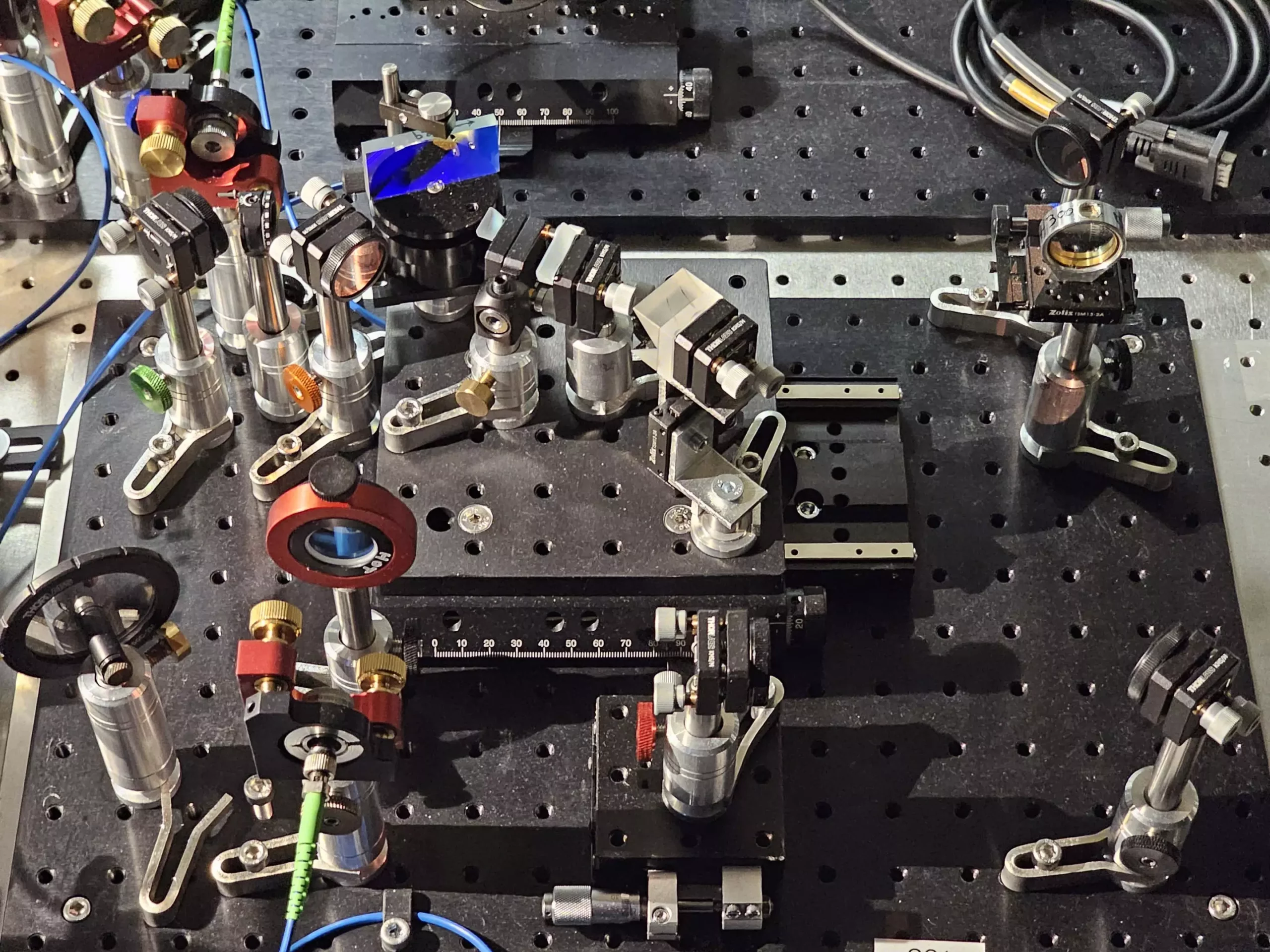In a groundbreaking development from the University of Warsaw’s Quantum Optical Devices Lab, researchers have unveiled a quantum-inspired spectrometer that boasts a remarkable enhancement in resolution for analyzing short pulses of light. This innovative device, known as Super-resolution of Ultrafast pulses via Spectral Inversion (SUSI), marks a significant advancement over traditional spectroscopic methods. The work conducted at the Centre for Quantum Optical Technologies, within the Faculty of Physics, strives to transform how we perceive and analyze the worlds of both classical optics and quantum information.
Spectroscopy explores the colorful signatures of light produced by different chemical substances and cosmic entities. By studying these spectra, scientists can glean vital information about the elemental construction and characteristics of materials, from the chemical composition of a mineral to the age and size of a distant star. As interconnected optical networks become integral to modern communication—ranging from fiber optics to burgeoning quantum networks—the ability to delineate overlapping spectral channels is of paramount importance. The SUSI device addresses this challenge head-on, providing a solution for instances where conventional spectroscopic methods falter due to closely spaced wavelengths or spectral lines.
The obstacles presented by spectral overlap have long been rooted in a principle known as the Rayleigh criterion, famously articulated by Lord Rayleigh. This principle elucidates the difficulties faced in resolving closely spaced wavelengths, a challenge intensifying the demand for advanced spectroscopic techniques. The emergent field of quantum information science has reshaped our understanding of light, revealing that traditional spectroscopy methods tend to overlook crucial information captured in the phase of light’s complex electromagnetic field.
This discrepancy presents a unique research opportunity, and the SUSI device harnesses this insight. By optimizing the phase information before detection, this novel technique reinvents conventional approaches and provides a new framework for high-resolution spectral analysis.
To realize the full potential of this concept, the SUSI device applies principles similar to those used in quantum-inspired super-resolution imaging. In this context, the light emitted by an object is divided into two distinct paths within an interferometer. Within one arm of the interferometer lies the inversion device that modifies the emitted light’s image, while the other arm maintains the original light. When light from both paths interacts, the detection of super-resolved features hinges on the relationship between the inverted signals and the original.
This measurement technique allows researchers to identify minute movements of light sources with an unparalleled degree of precision. When extending this concept from imaging to time and frequency domains, SUSI promises to deliver remarkable accuracy in the detection of closely timed pulses of light—each corresponding to a slightly different wavelength. This distinction is critical in applications, whether for identifying chemical compounds or enhancing the capability of communication channels in optical networks.
The implications of the SUSI device stretch far beyond laboratory use. For instance, the ability to miniaturize this spectrometer onto photonic chips opens an array of possibilities for integration into numerous applications, particularly in the burgeoning field of quantum networks. Such networks promise ultra-secure communication, taking advantage of quantum entanglement to transmit information without the risk of eavesdropping. Additionally, the SUSI’s super-resolution capabilities could streamline spectroscopic studies in various fields, including materials science, astrophysics, and environmental monitoring.
Constructed by Ph.D. student Michał Lipka under the mentorship of Dr. Michał Parniak, SUSI represents a collaborative effort that emphasizes research precision and interdisciplinary approaches. The tool’s adaptability allows it to align seamlessly with existing optical technologies, making it a prime candidate for future advancements in super-spectrometers and optical communications. As researchers and industry professionals seek out innovative solutions to meet evolving scientific and technological demands, the SUSI spectrometer stands at the forefront of this critical transition.
The development of the SUSI spectrometer exemplifies not merely an improvement in optical resolution, but a profound shift in how we access and interpret the complexities of light. By merging quantum-inspired methods with practical spectroscopic applications, the research from the University of Warsaw propels us into a future rich with potential. As the fields of optics and quantum science continue to merge, the boundaries of communication, research, and practical applications will expand, offering tantalizing glimpses of what lies ahead in our understanding of the universe and the technology that connects us.


Leave a Reply